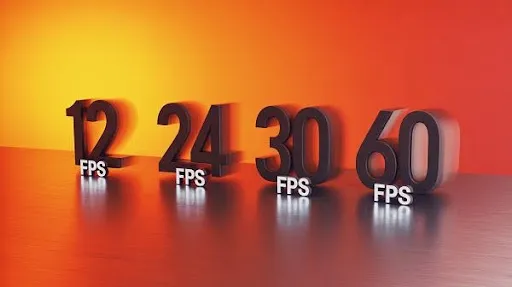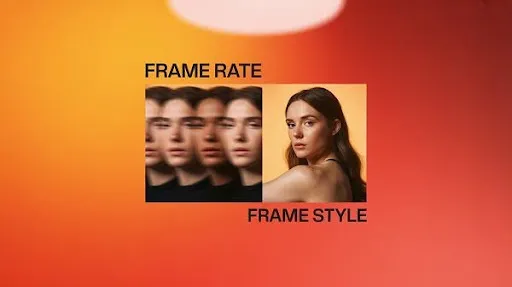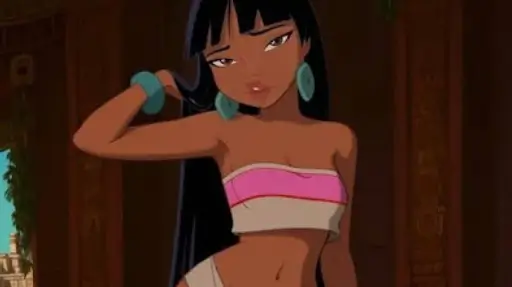When animation looks buttery-smooth or perfectly choppy for effect, there’s one thing controlling the magic behind the scenes: animation frames.
The way characters move, emotions change, and scenes flow isn’t random. It’s a calculated game of frames. And in 2025, understanding how animation frames work isn’t just for animators anymore — it’s key for studios, marketers, game designers, and anyone serious about visual storytelling.
If you’ve ever asked yourself, “What is a frame in animation?” or “How do animations use frames?”— you’re exactly where you need to be.
Let’s pull the curtain back.
What is an Animation Frame?
Think of animation frames as individual still images. When you stack and play them rapidly, you get motion.
That’s it — no fluff.
Every frame acts like a still image, capturing a moment. These still images gradually come together to form moving pictures which, when viewed, give an illusion of movement. Smoother movement can be achieved when the images are played back at a higher speed.
In more scientific terms, the concept can be explained in frame rate, which is measured in frames per second (fps). A standard 2D animation uses 24fps, which means 24 frames are played in one second.
Miss a few frames or place them poorly, and the entire animation feels off.
Why Animation Frames Matter in 2025
Let’s get something straight: no algorithm, tool, or software in 2025 can fully replace the decision-making behind animation frames.
Sure, AI tools and automated platforms speed up production. But without hand-picked frames at the right intervals, animations lose their charm — or worse, confuse the viewer.
This is why studios still rely heavily on frame-by-frame animation in certain scenarios. Each frame helps create timing, rhythm, and emotional weight.
In games, missing just a few slow-motion animation frames can throw off gameplay cues. In explainer videos, overloading with frames might make movements feel rushed or unprofessional.
Precision is everything.
How Do Animations Use Frames?
Let’s break it down.
Animations use frames to:
- Control timing: Slow vs. fast actions are defined by how many frames are used between poses.
- Convey emotion: A quick blink may only need two frames. A slow, dramatic turn might need ten.
- Set pacing: More frames create smoother motion. Fewer frames can feel stylized, jarring, or comedic.
- Emphasize actions: Animators use techniques like anticipation and follow-through, which rely on added or stretched frames.
Knowing how to use frames in animations is half science, half instinct. That’s what separates a clunky explainer from a Pixar short.
The Different Types of Frames in Animation
So, how many types of frames are there in animation? Not all frames are equal. Each serves a specific purpose.
1. Keyframes
These are the major poses or scenes — the foundation. Think of a character jumping: one keyframe before the jump, one at the peak, one landing.
2. In-betweens (Tweens)
These fill the gap between keyframes. They create the motion from Point A to Point B.
3. Breakdowns
These are more refined in-betweens. They help define arcs, spacing, or secondary motions — like a twist during a fall.
4. Hold Frames
Sometimes an animator wants a character to pause for suspense, reaction, or comedic effect. Holding the same frame across multiple moments makes that happen.
Frame-by-Frame Animation
Despite motion capture, 3D rigging, and AI interpolation, frame-by-frame animation hasn’t died. If anything, it’s seen a revival.
Behind the scenes of a Cartoon Saloon production or a segment of Netflix Originals, this is the technique that is used to give the animation an intimate, personal, handcrafted feeling.
Here’s why it still matters:
- Authenticity: Every frame reflects a human touch.
- Control: You can stretch or compress time exactly how you want.
- Style: Stylized, exaggerated, or surreal motion is best built one frame at a time.
In fact, even 3D animation services use hand-drawn slow-motion animation frames for dynamic action or “bullet-time” moments.
Frames Per Second (FPS): The Sweet Spot for Animation
When someone asks, “What is the frame rate in animation?” the answer isn’t one-size-fits-all.
Here’s a basic breakdown:
- 12 fps: Budget 2D animation. Choppy but stylized.
- 24 fps: Industry standard for film. Smooth but not overly fluid.
- 30 fps: Common in video games or digital media. Crisp and responsive.
- 60 fps: Ultra-fluid. Often used in VR or high-end cinematic game trailers.
Each different frame rate affects mood and tone.
Fun fact: Renowned animation studio, Studio Ghibli, creates its handcrafted animation at 12 FPS unless it is an emotionally heavy or impactful scene, then they ramp it up to 24 FPS.
Too smooth? It feels sterile. Too choppy? It might look cheap — unless done intentionally.
This is where animation directors earn their pay. Choosing how many frames per second to use in which scenes is both art and science.
Choosing the Right Type of Frame for the Right Project
Let’s talk strategy. Based on your animation style or project, you’ll need different combinations of frames.
For example:
- Explainer videos: Rely on solid keyframes and basic in-betweens for clarity.
- Cartoon shows: Use a mix of holds, tweens, and breakdowns for stylized, cost-effective results.
- Feature films: Often packed with complex keyframes, subtle breakdowns, and thousands of in-betweens.
- Gaming cutscenes: Might blend frame-by-frame with real-time engine interpolation to maintain style and performance.
How to Use Frames in Animations Like a Pro
Here are some quick, practical tips:
- Use references. Film yourself or others moving and analyze frame timing.
- Don’t overanimate. Not every movement needs 60 fps. Use less to create punch.
- Time for emotion. Add extra frames when your character feels something — a pause adds weight.
- Master timing charts. Use them to space out frames and plan arcs.
- Test constantly. Play back your scenes often to catch pacing errors early.
Signs You’re Using the Wrong Frame Strategy
Ever looked at your animation and thought, “Something feels… off”?
You might be:
- Cramming too many frames into fast scenes.
- Using holds for too long (makes animation feel frozen).
- Ignoring arcs — movements aren’t fluid between keyframes.
- Not matching frame rate with the platform (e.g., 60 fps for YouTube shorts but only 12 fps for a stylized IG reel).
Exploring Frame-By-Frame Animation (And Why It Still Matters)
Hand-drawn animation is one of the oldest techniques used in animation, and it is what most people associate animation with. It is the backbone of animated storytelling and is still in use in 2025.
Every tiny movement was created by drawing each frame individually. No shortcuts, no automation, just raw skill and vision.
This technique remains relevant in 2025, not because it’s old-school, but because it offers total control. If you want that ultra-smooth, emotion-packed movement, there’s no better way than manually animating each frame.
Here’s why people still choose it:
- Precision over motion
- Total control of character expression and body mechanics
- Unique aesthetic that stands apart from algorithm-generated animations
But let’s not sugarcoat it: it’s labor-intensive. Every blink, smirk, or bounce has to be plotted frame-by-frame. If you’ve got time, patience, and artistic vision, this might be your medium.
The Slow-Motion Animation Frames
Slow-motion in animation is where the magic of timing really shines. You’re stretching time, not just slowing it. You use more animation frames to break down a single movement into smaller, detailed parts.
For example, a regular jump might use 8–10 frames. A slow-mo jump? Might use 30 or more. Every frame matters. It builds anticipation, exaggerates weight, and allows the viewer to feel the force behind the motion.
Every frame is a moment in time, and not every moment in time is worth savoring. Skillful and smart animators choose which moments to amplify to evoke emotion and highlight the story being told, resulting in impactful work.
Understanding Frame Rates
Let’s kill the myth that frame rate is just a number on a screen.
What is the frame rate in animation? In the case of animation, frame rate should define the number of images shown every second, and the fluidity of that motion is dictated by FPS (frames per second).
Here’s how different frame rates look:
- 12 FPS: Stylized and choppy, often used in stop-motion
- 24 FPS: Industry standard for cinematic animation
- 30 FPS: Smooth digital animations, gaming cutscenes
- 60 FPS: Ultra-smooth, often used in hyper-realistic animations or tech demos
Finding the appropriate framing for your story is not about what looks best. Sometimes, a smooth approach takes the charm out.
How to Use Frames in Animations (Without Losing Your Mind)
Here’s a real-world breakdown of how frames are used in the animation production pipeline.
1. Planning the Movement
Plan your actions before picking software or pencils. For any jump or a turn, the actions to start and finish sequences should be defined.
2. Sketch the Keyframes
Plot out the key poses first. This gives you anchors for the movement. It’s like drawing only the important beats of a dance.
3. Add Inbetweens
Once the keyframes are locked, you go in and add the in-between frames. This is where fluidity happens.
4. Adjust Timing
Use timing charts or adjust your timeline to speed up or slow down certain movements. The goal isn’t just movement—it’s believability.
5. Polish
Check your arcs, spacing, and squash & stretch. Add easing where needed to create natural movement.
Done right, this process turns static images into dynamic storytelling.
Frame Rate vs. Frame Style
Too many beginners obsess over frames per second, but forget to think about frame style. A fast FPS doesn’t fix a boring animation.
Ask yourself:
- Do I want the animation to feel cartoony or realistic?
- Do I want it to move snappily or slowly?
- Will the visual style look better with more or fewer frames?
Matching the frame rate to the frame style is where seasoned animators separate themselves from the rest.
Cartoon shows like The Simpsons or Rick and Morty use 12 FPS with clever frame holding to save time and maintain style. On the other hand, feature films use 24 FPS because they can afford the detail, and they need that realism.
The right combo of style and speed? That’s animation gold.
Animation Frames in 3D Software
Most professionals are using frameworks such as Blender, Maya, or Cinema 4D. From 2025 and beyond, these will help make the automation of frame-based animation workflows smarter, not easier.
Instead of drawing each frame, animators work with timelines, rigs, and keyframes. The computer fills in the rest.
So long as the major principles are taught and each second of animation will remain to be made with stationary drawings, nothing will change. Even with the physical world. The animation will still need the action, moment, and emotion to be set, just not in the physical world.
Actually, even in a 3D world, a grasp of how to use frames in animations will give an advantage. It will help you with timing instincts, sharpen your guild, and improve your skills as a storyteller.
Frequently Asked Questions
1. What is a frame in animation?
Each frame, when played in a sequence or quickly, played back gives a motion illusion. Overall, animation requires and contributes to every frame.
2. How do animations use frames?
Animating motion by a series of frames requires a change in position or pose. More frames will ensure a smoother motion.
3. What is the frame rate in animation?
It's the rate at which the animation is played back and the individual frames are displayed: Frames Per Second (FPS). A higher rate enables the animation to be smoother and crisp, and the lower the rate, the choppier and stylized the animation becomes.
4. How many types of frames are there in animation?
The frame families are organized into four frame families, which consist of the major frame types called keyframes, inbetweens, breakdowns, and extremes. They all aid in creating the motions that define the character and drama.
5. What are hand-picked frames?
These are the frames that are selected and are extremely focused on or highlighted. They are usually selected in slow-motion or stylized animation to highlight detail or timing.
6. What are the different frame rates used for?
- 12 FPS – Stylized, budget-friendly animation
- 24 FPS – Standard for film and smooth storytelling
- 30+ FPS – Hyper-realistic or tech-driven animations
Final Word
To understand animation frames means to learn about the concept of technology. Animation frames involve understanding coding and visual images. Whether 12, 60, or 24 FPS is being used, every animated frame is designed to evoke an emotional response in the audience. With animation, timing is everything, and everything is happening at the same time.
With keyframes, inbetweens, and breakdowns, every component contributes to the animation and the storytelling.
The fact is, animation frames can only be mastered through the right knowledge, extensive practice and lots of time, frameworks, and professional proficiency.
Here at Prolific Studio, one of the best animation studios in New York, we do not just create animations; ideas are brought to life in full live motion. Our years of high-quality 2D and 3D animation acquisition across the globe, and we understand the leap from storyboarding to creating animated visuals from world-class storyboards.
Whether it’s an explainer video, product showcase, character animation, or brand campaign, we combine artistic storytelling with technical mastery to deliver animations that move people and drive results.
So if you’re ready to transform static concepts into motion-filled masterpieces, don’t go it alone. Partner with Prolific Studio — where every frame tells your story with impact.
Related Articles:










